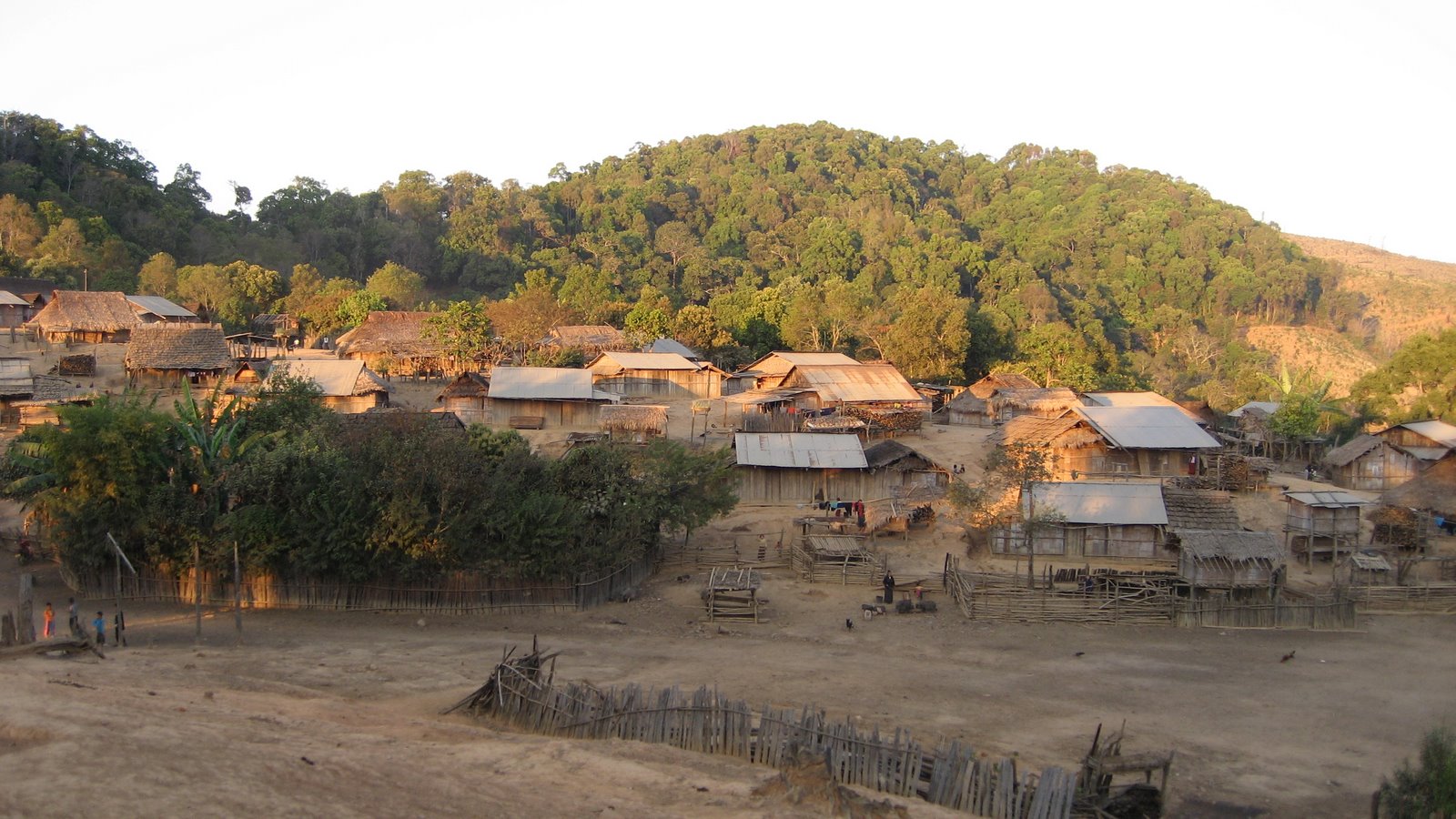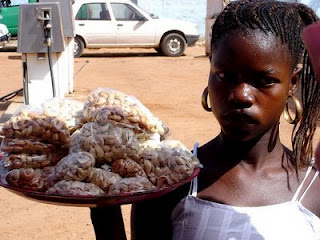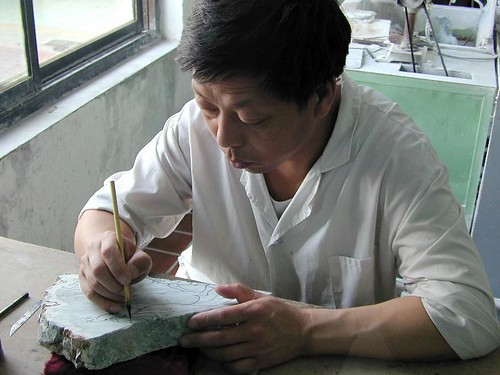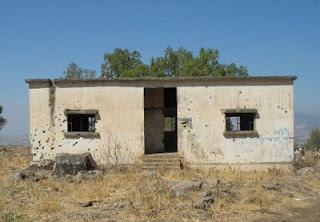Showing posts from category conflict.
-
Senegal’s Burgeoning Cashew Industry Linked to Rebel Movement
›August 13, 2008 // By Sonia Schmanski Senegal’s southernmost region, Casamance, has been the site of outright or latent conflict for some 40 years. Even before Senegal gained independence, there were calls for independence from the region. Separatist agitation in the region was inflamed during the 1970s by an influx of unemployed migrants from Senegal’s drought-stricken northern regions, seeking a part of “the greatest [economic] potential in all of Senegal.” Beginning in 1983, calls for independence soon led to armed conflict between southern separatist groups and the Senegalese government.
Senegal’s southernmost region, Casamance, has been the site of outright or latent conflict for some 40 years. Even before Senegal gained independence, there were calls for independence from the region. Separatist agitation in the region was inflamed during the 1970s by an influx of unemployed migrants from Senegal’s drought-stricken northern regions, seeking a part of “the greatest [economic] potential in all of Senegal.” Beginning in 1983, calls for independence soon led to armed conflict between southern separatist groups and the Senegalese government.
The U.S. Agency for International Development (USAID) mission in Senegal worked to support a peaceful resolution to the conflict by bolstering infrastructure and providing jobs. One USAID-funded program, undertaken in partnership with EnterpriseWorks Worldwide in 2001, aimed to modernize Casamance’s cashew-processing industry to strengthen the region’s war-torn economy. While cashew exports can bring in significant revenue, the region lacked the infrastructure to produce high-quality nuts for export. Processed cashews can bring in seven to 10 times the price of raw nuts. Today, 90 percent of the 15,000 metric tons of cashews Senegal produces each year come from Casamance.
Sadly, violence in the Casamance region has welled up again in earnest. The peaceful conclusion that many had hoped for following the peace accord of 2004 failed to materialize, and instead, the Senegalese army and Movement for Democratic Forces of Casamance (MFDC) rebels both maintain a large presence in the region.
The USAID-funded expansion of cashew production in Casamance may be having an unintended, and profoundly negative, consequence, reports IRIN News: Skyrocketing cashew prices are “lining the pockets of armed rebels.” Cashews remain a central feature of this conflict in other ways, as well. Earlier this year, more than a dozen villagers attempting to harvest nuts were rewarded by having their ears cut off with machetes by rebels patrolling the area.
MFDC member Damien Manga disputes claims that rebel groups are financed by revenue from cashew exports. He says that while rebels do sell the nuts, the profits finance living expenses only, not weapons purchases. “We collect cashew nuts to sell like everyone else…Some say [selling] cashews…enables us to buy weapons. This is false…it is only our leaders who buy our weapons.” Instead, Manga places blame for violence around the cashew orchards squarely on the shoulders of the Senegalese military. Senegalese military spokesman Lieutenant Malamine Camare refutes this claim, saying that the army’s mission is “to ensure the safety of people and goods in this region. We never engage in profit-making activities, and we execute our mission by the rules.”
Because certain resources and activities are so frequently linked to conflict – diamonds and oil, for example – the role of agriculture is often ignored. As authors Alec Crawford and Oli Brown argue in a new publication discussed in this New Security Beat post, any resource can be exploited to further conflict. Earlier this year, ECSP hosted the “New Horizons at the Nexus of Conflict, Natural Resources, and Health” event series exploring the interaction between human health, natural resources, and conflict.
Photo: A cashew seller in the Gambia. Courtesy of Flickr user Javier D.
-
Population, Natural Resource Pressures Could Ignite Human-Wildlife Conflict in Laos
› High population growth, limited arable land, and soaring rice prices in Lao People’s Democratic Republic mean that land access is critical for food security. At the same time, there is immense pressure to convert forests and small-scale agricultural land into commercial plantations for rubber, coffee, and other valuable crops. Together, these factors are significant threats not only to people, but to wildlife and biodiversity as well. They are also resulting in the emergence of new tensions between people and wildlife across the Lao landscape.
High population growth, limited arable land, and soaring rice prices in Lao People’s Democratic Republic mean that land access is critical for food security. At the same time, there is immense pressure to convert forests and small-scale agricultural land into commercial plantations for rubber, coffee, and other valuable crops. Together, these factors are significant threats not only to people, but to wildlife and biodiversity as well. They are also resulting in the emergence of new tensions between people and wildlife across the Lao landscape. -
Conflict Escalates in Resource-Rich South Ossetia
›August 9, 2008 // By Sonia SchmanskiEarlier today, Russian tanks attacked Georgian positions in South Ossetia, the much-disputed Georgian territory sandwiched between Georgia and Russia. With a population of around 70,000, the region has not known peace since the fall of the Soviet Union. Russia’s actions came in response to the Georgian army’s attacks on Russian-backed separatists. Hostilities between Georgian troops and the separatists had been rising since six people died during a skirmish between the two in early July, with Russia and Georgia subsequently accusing each other of violating the ceasefire by flying jets over South Ossetian territory.
The conflict has significant natural resource and environmental aspects. South Ossetia possesses rich stores of natural resources (including timber, manganese, iron ore, and copper and coal deposits), although it remains an economically isolated and depressed region. Also, its location is geopolitically strategic: It houses “[t]wo of the four major border crossings among the mountains separating Russia and Georgia,” along with several other critical roads, and is next to two vital oil pipelines, the Baku-Tbilisi-Ceyhan and the Baku-Supsa, which run from Azerbaijan to Turkey’s Black Sea ports and provide oil for numerous European countries, as well as the United States. These pipelines, in addition to Georgia’s “pivotal role in the global energy market,” render this newest iteration of the conflict cause for international concern.
There are additional environmental concerns in this region. The long-simmering conflict in South Ossetia has left a former Russian industrial complex categorized as “still generating pollution” and a nuclear waste site both untended. With no one to secure, assess, monitor, or remove the hazardous material, regional water sources and arable land are threatened. Lack of economic opportunity in Georgia, and particularly in South Ossetia, has led to illegal logging; “[i]ncentives for illegal export of valuable timber and endemic tree species from the conflict areas…are exacerbating deforestation.”
Economic desperation—combined with a lack of natural resource monitoring—can lead to conflict as people vie for use of a limited resource. A 2004 report from the Environmental Security Initiative (a joint program of UNEP, UNDP, and OSCE) on the South Caucasus region warned that “[u]ncontrolled exploitation of forests, combined with outdated farming practices, are contributing to land degradation and desertification, threatening agricultural productivity.” Indeed, these factors did lead to further trouble for South Ossetia. When Georgia tried to clamp down on “the significant black market trade [in everything from vegetables to illegal arms] going on between South Ossetia and Russia” in 2004, violence quickly re-emerged.
-
2008 Olympics Fuels Burma’s Oppressive Jade Trade
›August 8, 2008 // By Daniel Gleick Four billion people are expected to watch the opening ceremonies of the Olympics today. But what many people may not know is that in an attempt to highlight Chinese heritage, the medals given to victorious Olympic athletes over the next several weeks will include jade—much of which is mined in terrible conditions in neighboring Burma. Although the Beijing Organizing Committee has publicly stated that the medals and officially licensed products are being made with jade from China’s Qinghai Province, not jade from Burma, Blood Jade: Burmese Gemstones & the Beijing Games, a new report by 8-8-08 for Burma and the All Kachin Students and Youth Union maintains that the “showcasing of jade on the world stage will further escalate the growth in demand.
Four billion people are expected to watch the opening ceremonies of the Olympics today. But what many people may not know is that in an attempt to highlight Chinese heritage, the medals given to victorious Olympic athletes over the next several weeks will include jade—much of which is mined in terrible conditions in neighboring Burma. Although the Beijing Organizing Committee has publicly stated that the medals and officially licensed products are being made with jade from China’s Qinghai Province, not jade from Burma, Blood Jade: Burmese Gemstones & the Beijing Games, a new report by 8-8-08 for Burma and the All Kachin Students and Youth Union maintains that the “showcasing of jade on the world stage will further escalate the growth in demand.
Despite being internationally and internally reviled, Burma’s ruling military junta has been able to maintain its grip on power by controlling the country’s rich natural resources. Burma exports many types of gems, all of which the junta requires be sold through government auctions, where it takes a cut of the profits. BusinessWeek reported that Burma’s official 2006 jade exports totaled $433.2 million, or 10 percent of the country’s total exports. Official tallies are often unreliable, however, and the black market further obscures the true figures.
“In the mining areas, the companies make their own laws,” says a Burmese citizen quoted in the report. Blood Jade tells of mining companies—sometimes with official military support—beating, torturing, and even killing miners who dig through mine waste for discarded stones or make mistakes on the job. “Jadeite production comes at significant costs to the human rights and environmental security of the people living in Kachin state,” says the report. “Land confiscation and forced relocation are commonplace and improper mining practices lead to frequent landslides, floods, and other environmental damage. Conditions in the mines are deplorable, with frequent accidents and base wages less than US$1 per day.”
In an attempt to keep workers on duty for longer hours and to suppress rebellion, the Burmese government has encouraged drug sales and use. The economic situation is so desperate that many women are forced into the sex trade, which the government also condones. The combination of prostitution and drug use has led to disastrous HIV/AIDS rates. “Today,” Blood Jade reports, “four prefectures in Yunnan Province are regarded as having ‘generalized HIV epidemics.’”
Yet despite the misery they cause, jade and other gems are not even the largest single source of income for Burma’s rulers. According to a 2007 article from Foreign Policy, two other resources rate higher: natural gas and the tropical hardwood teak, which is so valuable that it has “perpetuated violent conflicts among the country’s many fractious ethnic groups.”
Several groups have organized campaigns urging people not to buy jade products, but it is unclear what impact they will have on the trade. Following the junta’s crackdown on anti-government protests by Buddhist monks in November 2007, a representative of Kam Wing Cheong Jewelry in China told BusinessWeek: “We will not stop purchasing stones in Burma because of the political situation. The political chaos did not start with the junta; the country has been plagued by the conflicts with ethnic minorities for years. This is totally out of our control.”
Photo: Man working in a jade factory in China. Courtesy of Flickr user maethlin -
Testing the Waters: How Common is State-to-State Conflict Over Water?
›August 7, 2008 // By Rachel Weisshaar I was lucky enough recently to vacation in Israel—and I still have the jet lag to prove it. On the second day of the trip, as we crossed the Jordan River and entered the Golan Heights, our guide explained that people have fought over water throughout history—especially in the Middle East. “Aha!” I thought to myself. “Another example of how the average person mistakenly believes that water scarcity leads to conflict—whereas, as an Environmental Change and Security Program staff member, I know that interstate ‘water wars’ are actually incredibly rare.”
I was lucky enough recently to vacation in Israel—and I still have the jet lag to prove it. On the second day of the trip, as we crossed the Jordan River and entered the Golan Heights, our guide explained that people have fought over water throughout history—especially in the Middle East. “Aha!” I thought to myself. “Another example of how the average person mistakenly believes that water scarcity leads to conflict—whereas, as an Environmental Change and Security Program staff member, I know that interstate ‘water wars’ are actually incredibly rare.”
Yet our guide proceeded to describe several water-related conflicts between Israel and its neighbors before and after the 1967 Arab-Israeli War. So when I returned to the States, I was inspired to look up these events in the Pacific Institute’s Water Conflict Chronology and in Oregon State University’s Transboundary Freshwater Dispute Database. I found that Israel and its neighbors were frequently engaged in violent conflict with one another over water during the 1960s and early 1970s. For instance, after Syria began diverting the headwaters of the Jordan River in 1965—a project that would have deprived Israel’s National Water Carrier of approximately 35 percent of its water and the country as a whole of around 11 percent of its water—Israel responded with a series of military strikes against the diversion works. The back-and-forth attacks helped instigate the 1967 Arab-Israeli War.
Another example: In 1969, Israel, which believed that Jordan was overdiverting the Yarmouk River, bombed Jordan’s East Ghor Canal. The United States mediated secret negotiations in 1969-1970, and the Jordanians were allowed to repair the canal in exchange for abiding by Johnston Plan water quotas and expelling the Palestinian Liberation Organization from Jordan.
So how do we explain the apparent disconnect between the numerous instances of violent conflict over water in the Middle East and political scientists’ insistence that water rarely leads to interstate conflict? I think the answer is twofold. First, I happened to be standing in the region of the world that is by far the most prone to conflict over water. There were only 37 violent interactions over water between 1946 and 1999, and 30 of these were between Israel and a neighbor. Water experts recognize that the Middle East is the exception to the general pattern of water disputes leading to cooperation, not conflict. But to Middle Easterners like my Israeli guide, it may indeed seem that water frequently leads to conflict.
Second, the devil is in the definitions. The Transboundary Freshwater Dispute Database classifies events according to its Water Event Intensity Scale, which runs from -7 (“formal declaration of war”) to 7 (“voluntary unification into one nation”). The East Ghor incident is classified as -6 (“extensive war acts causing deaths, dislocation or high strategic cost”). Events classified as -6 can include “use of nuclear weapons; full scale air, naval, or land battles; invasion of territory; occupation of territory; massive bombing of civilian areas; capturing of soldiers in battle; large scale bombing of military installations; [and] chemical or biological warfare,” so they seem to differ from war only in that war has not been formally declared.
Perhaps this is where much of the confusion comes from: Political scientists studying water conflict use a very narrow definition of war—probably a lot narrower than that of most non-experts. So while the average interested citizen would likely call the 1965-1967 conflict between Israel and Syria over the National Water Carrier and the Headwater Diversion project a war—or at least a high-level interstate conflict—the political scientist studying water conflict and cooperation would not.
Now, as a general principle, I’m all in favor of precise language and definitions. But formal declarations of war seem to have gone out of fashion over the past half century; the United States, for instance, has not formally declared war against another country since World War II. If the current war in Afghanistan were over water—which it decidedly is not—would it still merit only a -6 on the Water Event Intensity Scale because the United States has not formally declared war against the Taliban? It seems that requiring a formal declaration of war to classify a conflict as a war is perhaps defining the term too narrowly.
But although political scientists may be to blame for clinging to a somewhat outdated definition of war, the media are perhaps at fault for using the word too broadly in an attempt to make their headlines more enticing. This editor concludes—only somewhat self-servingly—that we would all benefit from using language more precisely. I welcome your responses.
Photo: The Golan Heights landscape still bears scars from the 1967 Arab-Israeli War. Courtesy of Rachel Weisshaar. -
Weekly Reading
›“The term ‘climate refugees’ implies a mono-causality rarely found in human reality,” argue the authors of a report on climate change and forced migration released by the Norwegian Refugee Council. The report’s authors urge additional research on the links between climate change, migration, and conflict, and strongly emphasize the importance of helping developing countries adapt to climate change’s impacts.
According to a report released by the Internal Displacement Monitoring Centre of the Norwegian Refugee Council, the number of internally displaced persons (IDPs) reached 26 million in 2007, despite an overall decline in the number of violent conflicts around the world.
The Philippine government reached a deal with a Muslim rebel group that will expand an autonomous region in the southern Philippines. “The proposed homeland will be entitled to a large share of the resources in the area,” reports the BBC. -
Senate Bill Links Population Growth to Conflict, Environmental Degradation
›August 1, 2008 // By Meaghan ParkerThe Senate’s FY 2009 foreign assistance bill cites the stresses “caused by high rates of population growth, which contribute to competition for limited resources, environmental degradation, malnutrition, poverty and conflict” in its recommendation for funding family planning. The $520 million in funding is $15 million above the FY08 level and $219 million above President Bush’s request. This noteworthy new language cements the re-emergence of population issues in Congress, following the record $600 million in reproductive health funding recently approved by the House (also nearly double Bush’s request).
According to an email from Tod Preston of Population Action International, “it is the first time in several years (at least) that population language like this has been included in the foreign assistance bill, and it will almost certainly remain as is.” The impact of rapid population growth on critical issues “referenced in the report (i.e., malnutrition, environmental degradation, poverty and conflict) is getting back on the ‘radar screen’ of policymakers and the media,” which “should help increase support for programs such as voluntary family planning and girls’ education, which we know help reduce population growth rates,” he said.
-
Al Jazeera Films the Evaporating Way of Life of Niger’s Tuareg Rebels
›July 29, 2008 // By Sonia SchmanskiThe land of Niger’s Tuareg Bedouin tribes—and thus the Tuareg way of life—is drying up. The steadily advancing Sahara desert is swallowing northern Niger at a rate of six kilometers per year, part of a centuries-old process recently accelerated by climate change and groundwater withdrawals by the nation’s booming uranium mining industry.
French nuclear giant Areva flies in workers rather than hiring locals to man the mines, and as a result, the Tuareg and other tribal groups have little or no opportunity to find employment. Cut out of the revenue stream, rebel fighters, made up of Tuaregs as well as members of other Bedouin tribes, are demanding a percentage (20-30 percent, by most accounts) of the revenue generated by the uranium mined on their land.
Defying a government ban on reporting on the conflict, Al Jazeera television reporter May Welsh interview the rebels in a five-part video series on the Tuareg. “They’re fighting a state that’s ignoring their problems,” she says. For example, a family suffering from a new and mysterious ailment claim they have been denied care by Areva’s medical offices. Welsh suggests their illness could be attributed to the radioactive water around Areva’s facilities.
Areva, for its part, rejects the notion that it is poisoning the people of northern Niger. In a document released in August 2007, the company reports that 60-70 percent of its private hospital patients are members of surrounding communities. Areva also states it gives preference to local sub-contractors in its exploration and procurement activities. But the yawning gulf between Areva’s position and the reality in northern Niger belies the company’s claims.
Conflict between rebel groups and the Nigerien army has separated families, displaced people, destroyed schools—and interfered with humanitarian missions. The government ordered the French NGO Medecins Sans Frontieres (MSF) to suspend its activity in Niger based on unsubstantiated suspicions that members of the organization were colluding with rebels. Welsh’s daring reports illuminate these and other dangers of life in Niger’s desert, a life that may soon become impossible.




 I was lucky enough recently to vacation in Israel—and I still have the jet lag to prove it. On the second day of the trip, as we crossed the Jordan River and entered the Golan Heights, our guide explained that people have fought over water throughout history—especially in the Middle East. “Aha!” I thought to myself. “Another example of how the average person mistakenly believes that water scarcity leads to conflict—whereas, as an Environmental Change and Security Program staff member, I know that interstate ‘water wars’ are actually incredibly rare.”
I was lucky enough recently to vacation in Israel—and I still have the jet lag to prove it. On the second day of the trip, as we crossed the Jordan River and entered the Golan Heights, our guide explained that people have fought over water throughout history—especially in the Middle East. “Aha!” I thought to myself. “Another example of how the average person mistakenly believes that water scarcity leads to conflict—whereas, as an Environmental Change and Security Program staff member, I know that interstate ‘water wars’ are actually incredibly rare.”

